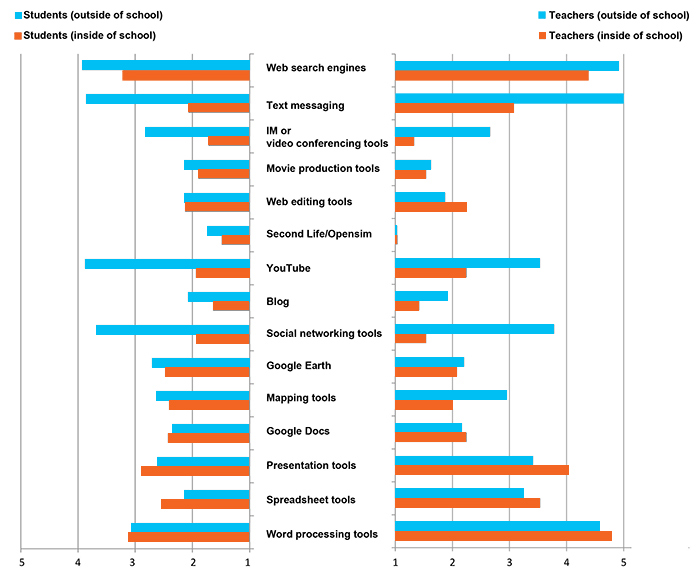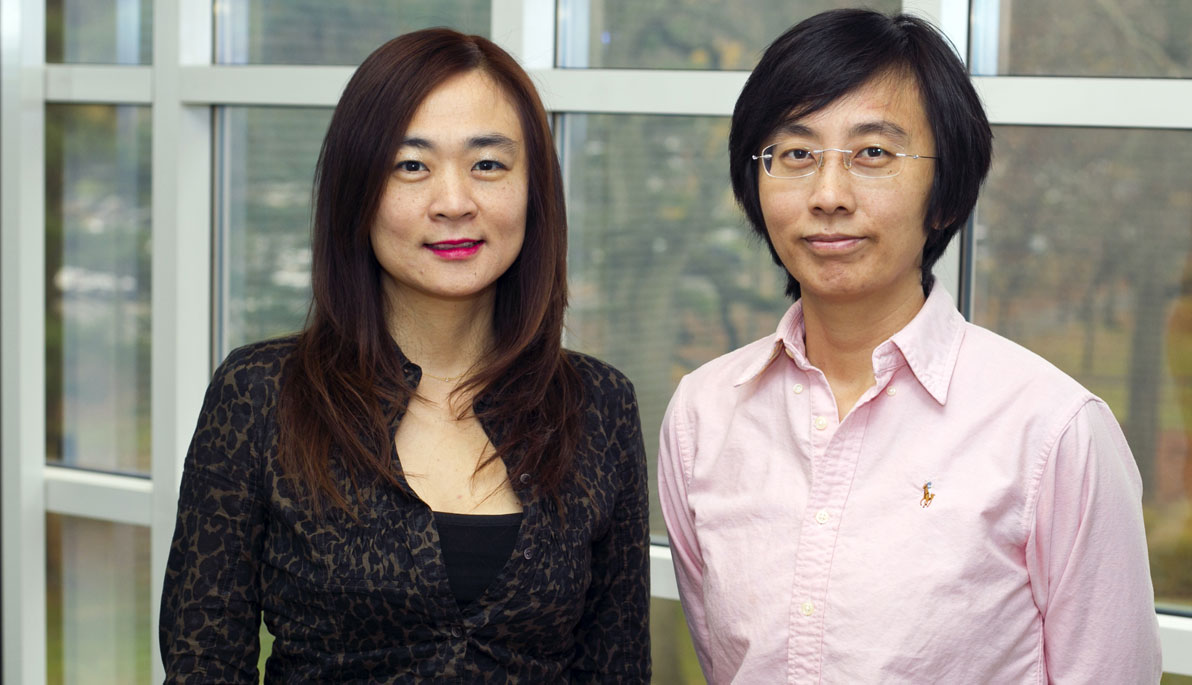News
What Digital Divide? NYIT Researchers Explain Tech in the Classroom
January 23, 2015
Do you think "digital natives" are more tech savvy than their teachers? That is, the generation born in the digital era (1980 and after) as originally coined in Marc Prensky's 2001 paper, "Digital Natives, Digital Immigrants," in On the Horizon. We decided to find out.
We surveyed 24 middle-school teachers aged 23 to 56 from New York and Utah on how they use technology inside and outside of school. A total of 1,079 students defined as third-generation digital natives also participated in the study.
Our results are displayed in the chart below. As you can see, we found teachers tend to have greater, more sophisticated ways of using technology than students.

Chart: 1 = never, 2 = once a year, 3 = once or twice a month, 4 = once or twice a week, 5 = almost every day.
We found that students use technology outside of school for school projects, social networking, and entertainment—but mostly for playing games and listening to music. Teachers show similar patterns of usage but with greater frequency, and also tend to use technology to solve daily problems, improve productivity, and aid in their personal learning needs.
Today's school-age learners are no more tech savvy than their teachers. The previous assumption used to profile students as digital natives did not apply to the students in this study. In fact, teachers' technology use often surpassed those of students both inside or outside of school. The problem is that both teachers and students use a lot less technology inside of schools. We found the most commonly used technologies in schools were simple tools like word processing and search engines rather than productivity tools designed to enhance learning and cognitive skills. Rarely do teachers provide opportunities for students to use technology to solve problems, increase productivity, or develop creativity.
The gap lies within how little opportunity students get to practice technology beyond pursuing their personal interests. School-age students may be fluent in using entertainment or communication technologies but they need guidance to learn how to use them to solve critical thinking problems.
Using technology for learning purposes requires a different set of skills than the use of technology for communication or entertainment. Despite the fact that teachers frequently use technology outside of schools for personal purposes, they do not necessarily know the best way to use it to improve classroom instruction.
We recommend that teachers get high-quality training to help them learn to integrate content-specific technology into their lessons and teach their students how to more effectively use technology. The school setting is ideal for fulfilling the need to shape and facilitate students' technology experiences. Once teachers introduce students to a new technology to support learning, they can quickly learn how to use it.
About the Authors: Shiang-Kwei Wang, Ph.D., associate dean of the School of Education, and Hui-Yin Hsu, Ph.D., associate professor and chair of the Department of Teacher Education, are launching NYIT's first free MOOC on Gaming Literacy and Learning, March 9-April 28. Enroll today.
They published their study on digital natives in the Springer journal Educational Technology Research and Development. Media outlets have reported their findings. Check them out:
- T.H.E. Journal
- U.S. News & World Report




